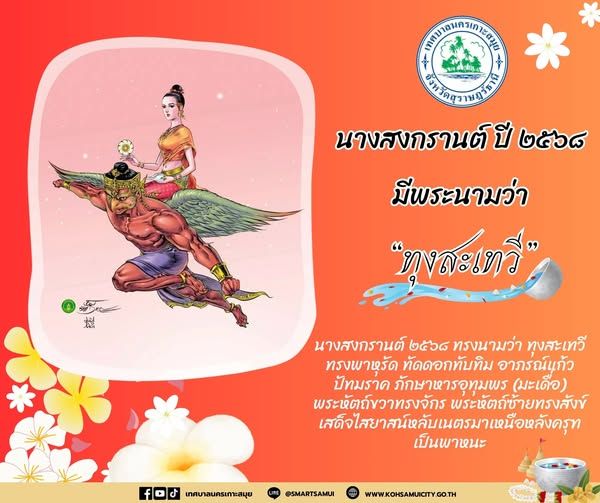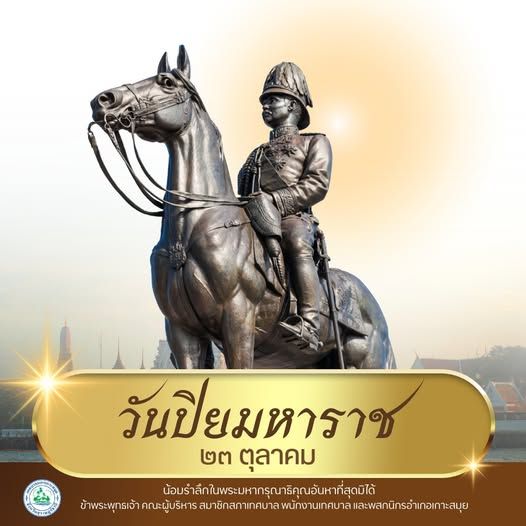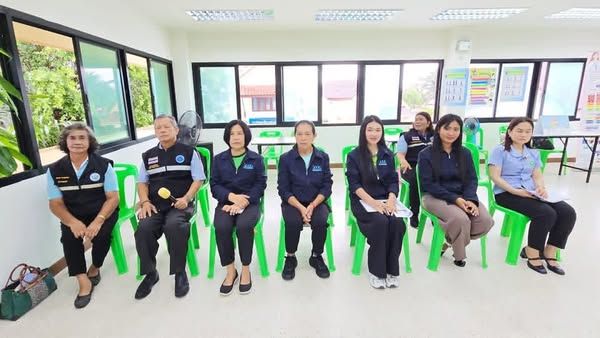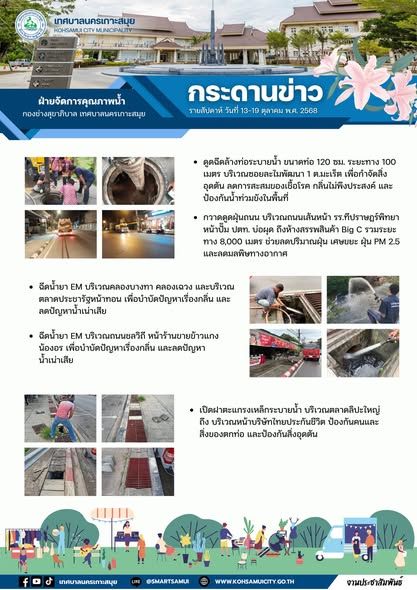Tungsathewi, the radiant Songkran Goddess of 2025, emerges as a symbol of prosperity and hope, adorned in pink and riding a majestic Garuda. Carrying sacred symbols and promising abundant harvests, she brings ancient Thai traditions to life during the vibrant New Year celebrations.
Songkran2025 #ThaiCulture #TravelThailand #CulturalHeritage #FestivalOfGods #ThaiNewYear #ExploreSoutheastAsia #CulturalCelebration #TungsathewiFestival #ThailandTravel
Introduction to Songkran and Its Goddesses
Songkran, the traditional Thai New Year festival, is widely celebrated every April across Thailand. One of the notable aspects of the festival involves the annual proclamation of a Songkran goddess, each carrying unique symbolic attributes. This tradition reflects ancient beliefs, connecting celestial influences to the prosperity and welfare of the nation in the coming year.
Official Announcement for 2025
For the Songkran festival in 2025, the Department of Cultural Promotion, under the Ministry of Culture, and the Royal Ceremonies Division of the Bureau of the Royal Household, have declared that the goddess presiding over the festivities is named Tungsathewi. This annual announcement is an important cultural event, inspiring rituals, processions, and community celebrations.
Symbolism of Tungsathewi
Appearance and Attire
- Color: Tungsathewi is adorned in pink, a color associated with compassion, love, and good fortune in Thai culture.
- Floral Ornament: She wears a pomegranate blossom behind her ear. Pomegranates symbolize abundance, fertility, and good health.
- Jewelry: Her ruby jewelry signifies nobility, power, and vitality, further enhancing her auspicious presence.
Sacred Objects and Food
- Figs (Uthumphon): As her chosen food, figs represent nourishment and a bountiful harvest. In Thai symbolism, figs are linked to prosperity and growth.
- Right Hand – Discus: The discus, or chakra, is a divine weapon often associated with protection and the dispelling of negative forces.
- Left Hand – Conch Shell: The conch shell is a symbol of auspiciousness, purity, and the spread of positive energy, frequently used in rituals and ceremonies.
Mode of Travel
Tungsathewi is depicted as reclining with her eyes closed while traveling on the back of a Garuda. The Garuda, a mythical bird creature, is an emblem of royal power, speed, and the ability to overcome obstacles. Her relaxed posture with closed eyes denotes peace and harmony.
Cultural and Agricultural Significance
According to traditional beliefs, the unique attributes of each year’s Songkran goddess provide predictions for the coming year. The selection of Tungsathewi, her attire, and the items she carries are interpreted as promising abundant crops, fruitful agricultural yields, and general prosperity. The pomegranate blossom and figs, in particular, are auspicious signs for farmers and communities reliant on the land, indicating a year of plenty and happiness.
Role in Songkran Celebrations
The Songkran goddess features prominently in parades, artwork, and ceremonial events throughout the festival. Her likeness is displayed in temples, public spaces, and processional floats. Communities invoke her blessings for well-being, good harvests, and harmony, integrating her presence into the traditional water-splashing festivities, merit-making, and family gatherings.
Continuing a Living Tradition
The annual unveiling of the Songkran goddess not only preserves but also revitalizes a living tradition. It connects contemporary celebrations to ancient cosmological beliefs, enriching the cultural fabric of Thai society and offering a sense of hope and renewal as the New Year begins.
Frequently Asked Questions
FAQ: Songkran 2025 and the Goddess Tungsathewi
What is the significance of Tungsathewi as the Songkran Goddess of 2025?
Tungsathewi, chosen as the Songkran Goddess for 2025, is a powerful symbol of prosperity, hope, and renewal. Adorned in pink, representing compassion and good fortune, and accompanied by sacred symbols like the pomegranate blossom and figs, she embodies wishes for abundant harvests and general well-being. Riding the Garuda and carrying a discus and conch shell, her attributes are believed to promise protection, prosperity, and harmony for the Thai people during the New Year celebrations.
How does Tungsathewi’s appearance and the items she carries reflect Thai culture and agricultural hopes?
Every detail of Tungsathewi’s appearance is rich in Thai cultural symbolism. Her pink attire and ruby jewelry represent love, nobility, and good fortune. The pomegranate blossom and figs are traditional signs of abundance and fertility, linking her to agricultural hopes for a bountiful year. The discus in her right hand signifies protection, while the conch shell in her left brings auspiciousness and purity. These elements are interpreted as predictions of fruitful harvests and positive energy for the year ahead.
In what ways does the Songkran Goddess feature in the festival’s celebrations and community life?
Tungsathewi’s image is central to Songkran festivities, appearing in parades, temple displays, processions, and public artwork throughout Thailand. Communities honor her through rituals, merit-making, and traditional ceremonies, seeking her blessings for health, happiness, and prosperity. Her representation helps connect ancient beliefs with modern celebrations, making the festival a vibrant expression of Thai cultural heritage and shared hopes for the future.




